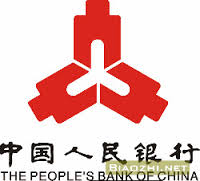
From CBA today:
SLF is a short‑term liquidity tool
The People’s Bank of China (PBoC) launched Short‑term Liquidity Operations (SLO) and Standing Lending Facility (SLF) in early 2013. SLOs, similar to regular Open Market Operations (OMO), are repurchase operations with a maturity of less than seven days. SLFs, by contrast, are collateralized lending with a maturity of one to three months. As such, SLF is comparable to Fed’s Discount Window, ECB’s Marginal Lending Facility or Singapore’s Standing Loan Facility. On the other hand, the recipients of SLFs are mainly policy banks and large state‑owned banks, whereas the SLOs are normally extended to financial institutions that are primary dealers in OMO markets and of systemic importance in the banking system.
SLF is discretionary but not secret
The PBoC released a list of selected financial institutions that are allowed to participate in the SLF. The facility typically originates with the designated financial institution approaches the central bank and the term is determined on a bilateral basis. While discretionary, the details of SLFs are regularly, albeit slightly delayed, published on the PBoC’s official website. The following link is an example of outstanding SLFs in the first quarter of 2014 published in May. The data show that the outstanding balance fell from CNY 301bn in October 2013 to zero at the end of March 2014.
SLF is not required reserve ratio cuts
The significant miss in August “total social financing” preceded a slew of bearish market commentaries that mostly alluded to sluggish domestic demand as the key reason (see CBA International Economics: Instant Views ‑ Off‑balance‑sheet activities continue to shrink). On that note, August economic data disappointed amidst clear signs of growth slowdown following the Q2 acceleration (see CBA International Economics ‑ China Economic Monthly: Weaker August confirms Q2 pickup was a blip).
Some analysts reiterated calls for a further easing to the existing neutral monetary stance, predicting in particular an imminent cut to either the reserve requirement ratio or the loan deposit ratio. As such, when the reported (unconfirmed) SLF of CNY 500bn to the five large state‑owned banks hit the newswire today, it was often mentioned as being equivalent to a cut to the required reserve ratio (RRR). However, the permanent nature of liquidity injection through broad cuts to the RRR, which itself already varies significantly across financial institutions, renders the comparison incorrect.
Moreover, even with the PBoC conducting SLFs of CNY 500bn, the size does not appear to have departed significantly from its average outstanding balance of around CNY 300bn in the past twelve months. Last but not least, our CBA Monetary Conditions Index (MCI) shows, despite downside risks to growth outlook coming to the fore, the existing monetary conditions remain broadly consistent with levels seen pre‑crisis in 2004 – 07 during which the Chinese economy was expanding at a much quicker pace.
PBoC still worries about off‑balance‑sheet activity
We believe the key objectives of the PBoC in the short‑term remain moderating credit growth to a sustainable pace while curbing off‑balance‑sheet activity. We believe these objectives should precede a permanent monetary easing step if conditions tightened further from primarily renewed CNY strength. In that regard, the August total social financing and loan data, while encouraging, were not conclusive. Against these backdrops, we expect market optimism following the reported SLFs to wane from the acute growth concerns as well as the absence of imminent monetary easing.
God job and yes.

